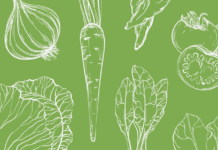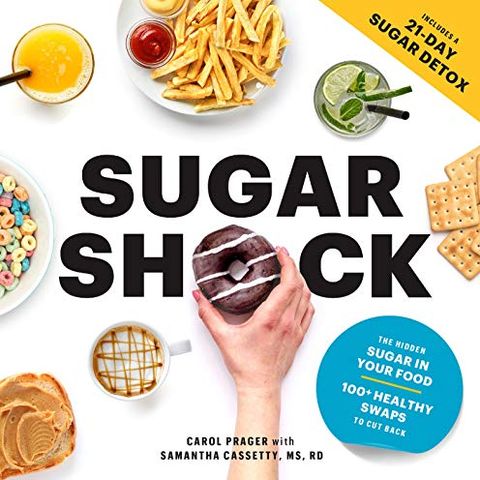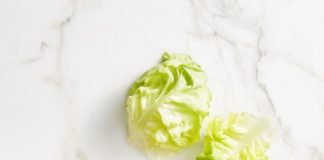When you’re at the supermarket looking at food labels, you may have noticed a new section on some Nutrition Facts panels: added sugar. By 2021, it’ll become mandatory for companies to list how much added sugar is in each product, and it’s enough to make you wonder: Is sugar so bad for you?
The idea that sugar is bad and addictive is arguably the queen of all diet myths these days. For any nutrient, the dose makes the poison: Eat too little, and you’ll run into health problems. Eat too much, and you’ll run into health problems. While “moderation” is a trope older than the phone book, it’s an important key to better health so long as you’re defining it for yourself and staying in touch with your body’s satiety cues.
The reason why sugar has become public enemy number one in recent years is because of where you’ll find it: heavily processed food and beverage. Since it’s added to lots of wholesome foods during processing, it’s one of the easiest nutrients to overeat. The other problem is that added sugar is often found in foods that don’t make you feel full, but do add calories from the sugar itself.
Why too much sugar is bad for you:
So what exactly happens to your body when you overdo it with these sugary foods? Since they don’t have a ton of nutrients like healthy fats and protein, there is not a lot that can slow your glucose levels from spiking in your bloodstream. High blood sugar can do some serious damage to your blood vessels, which carry fuel and oxygen to all of your organs, so your pancreas then quickly pumps out insulin to get everything back down to normal. This sudden crash can cause you to feel a bit tired and cranky, which may not seem like a big deal in the moment.
But if this becomes a vicious cycle, your body may lose it’s ability to effectively use insulin and it may develop chronic inflammation (among other issues). This is why consistently consuming excess added sugar can lead to heart disease, diabetes, lifestyle-related cancers, and even cognitive decline.
The U.S. Department of Agriculture (USDA) and U.S. Department of Health and Human Services (HHS) recommends limiting added sugar to 10% of your total daily calories. On a 2,000 calorie diet, that’s 50 grams per day, but calorie needs vary individually. If 50 grams sounds strict to you, the American Heart Association recommends that women consume no more than 24 grams of added sugar per day, and men stay under 36 grams of added sugar per day.
FYI: One teaspoon of sugar is about equal to 4 grams.
The different types of sugar:
Since carbs ultimately break down into glucose, the simplest form of sugar that fuels our organs and keeps us alive, you’ll find sugar in just about any food — at least to some degree. However, there are two main types of sugars when it comes to food labels: naturally occurring and added.
Naturally occurring sugars: All carbohydrates contain naturally occurring sugar, and you certainly shouldn’t avoid them — they’re in veggies and fruit, after all! They include:
Fructose (fruit sugar): fruit, honey, and root veggiesLactose (milk sugar): dairy productsSucrose (a combo of glucose and fructose): carbohydrates of all types, including produce
Fruit contains about 15 grams of naturally occurring sugar in one small piece (e.g., a small apple) or one cup serving (e.g., grapes). Similarly, an 8-ounce cup of milk is going to have about 12 grams of sugar. But because produce also contains fiber and dairy products also contain protein, these real, wholesome foods take more time and effort to digest compared to, say, a soda with added sugar.
Added sugars are ones that literally get added to a food, whether that’s you adding a sugar packet (or six) to your morning tea or purchasing a tea with 26 grams of sugar already in the bottle. Types of added sugar include fruit juice concentrate, agave nectar, evaporated cane juice, caramel, maltose, maple syrup, dextrose, tapioca, brown rice, corn, sorghum, wheat, glucose syrups, confectioners sugar, barley malt, corn syrup, molasses, turbinado sugar, galactose, and treacle.
The number one source of added sugar in the U.S. is beverages, which also do very little by way of satiety. (When you’re drinking something sweet, like fresh glass of celery juice or a Coca-Cola, do you feel fullafterward? We’re guessing not so much.) These other food categories also often contain added sugars:
Sweetened grain-based products, like cookiesSweetened dairy products and non-dairy alternatives, like some yogurtsSweetened foods and drinks with veggies or fruit as the base, like smoothiesCondiments, toppings, and syrups, like BBQ sauce
To make matters more confusing, some products sweetened with fruit juice or fruit puree can still get labeled as “No Sugar Added” because they falls under the FDA’s definition of “naturally occurring.” If this makes you want to give up, fear not! There are a number of ways to cut back while still eating the foods you love.
How to eat less sugar:
So now you know the difference between naturally occurring sugars and added sugars, you know exactly what to do, right?! Just kidding! It can be tricky no matter what you’re eating, so here’s a guide to make sweet-shopping simpler.
Read the label: The first ingredient should be a real, whole food— not sugar by a different alias, or sugar itself. Also note that manufacturers list ingredients by order of weight. So, if you notice that sugar is the first one listed, it’s the main ingredient; You may want to think about grabbing another treat.Consider concentrated sources (of naturally occurring) sugar, which you’ll find often in bottled beverages, like smoothies.Know the difference between snacks versus treats: If you like sweets and your goal is to eat a real treat — whatever that means for you, personally — decide if an item that contains added sugar is “worth it” for you to miss dessert today. For example, do you really want a super-sweetened yogurt parfait at breakfast instead of opting in on a brownie after dinner? When in doubt, choose chocolate. Chocolate itself is higher in fat and feels a little bit more satisfying, so it can make it just a little bit harder to overdo versus sour or gummy candies, which are straight sugar.
Even if the thing you’re craving is not the most “sugar conscious” desert, the key is to be mindful when you’re eating. If one night you’re hungry for some cheesecake, go for it so long as your nutritionist or doctor give you the “OK”. Be present with that cheesecake. Enjoy every bite. But if you ever feel like you’re overindulging (especially considering your dietary needs), it may be time to reevaluate.
































 6
6









